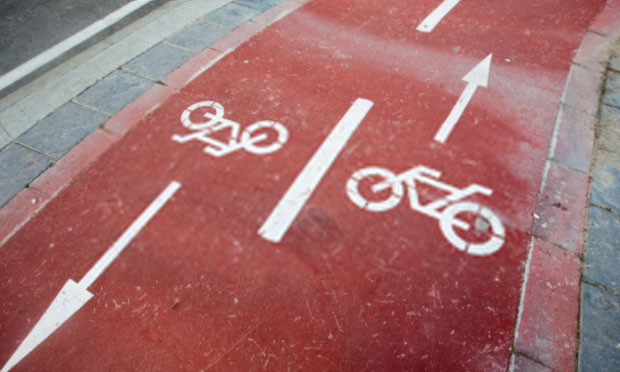In the United States a frequent source for cycling-infrastructure design is the American Association of State Highway and Transportation Officials’ Guide for the Development of Bicycle Facilities. In its current form, the guide favors one-way bike lanes separated from vehicular traffic by painted lines; cycle paths at sidewalk level are discouraged and physically separated two-way paths, known as cycle tracks, are not mentioned.
Based on sources such as the AASHTO guide, many state and local transportation leaders currently prioritize development of on-street bicycle lanes, believing them to be safer that alternatives such as cycle tracks. A 2010 study from the Harvard School of Public Health, “Risk of Injury for Bicycling on Cycle Tracks Versus in the Street,” published in Injury Prevention, suggests this belief is unfounded.
To better understand the relative safety of on-street and separated bicycle lanes, the researchers looked at 20 years of crash and injury data from Montreal, which has extensive cycling-specific infrastructure. Overall, the researchers found that physically separated cycle tracks are as or more safe than in-road bike lanes.
The study’s findings include:
- Cycle tracks were used by 2.5 times more cyclists compared to nearby on-street bicycle routes
- The relative risk of injury was 28% lower on cycle tracks compared to nearby on-street routes
- The safest cycle tracks were on streets that experienced the least amount of vehicular traffic
- Cycle tracks located on high-traffic streets saw fewer or the same number of injuries as alternative routes that were also in heavy traffic areas
The researchers noted that, despite their improved safety over on-street bike lanes, Montreal’s cycle tracks are still not ideal. Among other factors, in some situations they lack of parking setbacks at intersections that increase the ability of drivers and cyclists to see each other, and they aren’t uniformly two-way. Such changes would theoretically further improve the safety of the city’s cycle tracks.
Keywords: bicycling, bicycle, bikes, safety, infrastructure, protected bike lanes, bikeshare


Expert Commentary